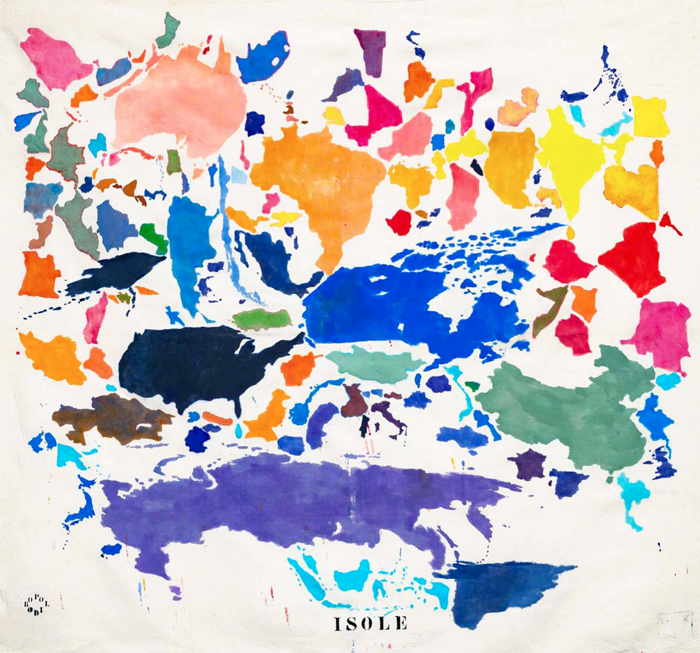A Chance to Unite: New Voices in International Writing
ISOLE, © Julie Polidoro 2019
In June of 2018 I participated in the Kostova Foundation’s Sozopol Literary Seminars in Bulgaria, giving a lecture and a reading. I also assisted Elizabeth Kostova in choosing the five fiction fellows who would attend her writing workshop at the Seminars, and we came to easy agreement: five young writers of enormous talent and promise, from the countries of Pakistan, the Philippines, Australia, Belgium, and the United States. By the end of the conference, I’d invited them all to be a part of an anthology of their work, to be published on the Ninth Letter website. Happily, they all agreed.
A few months later, I attended a group reading of international authors at the Instituto Cervantes in New York City, because one of the participants was Vladimir Poleganov, a Bulgarian writer I’d met in Sofia (you can read his work, “The Other Dream,” in the recent Ninth Letter anthology of contemporary Bulgarian literature, Some Kind of Second Heart). At the reading I was struck especially by the work of two young writers whose work I’d never encountered before: Chiara Valerio of Italy and the Austrian writer Theodora Bauer. I thought, Why not add the work of these two writers to the anthology as well? Finally, the anthropologist and writer Tobias Hecht introduced me to the work of the Argentinian writer Pablo Baler, and so this gathering of writers from around the world has come together.
The title of this anthology comes from a essay by Chiara Valerio, “What Do Maps Say.” In this essay she describes the work of the artist Julie Polidoro, whose paintings are inspired by Mercator maps. Valerio observes, “If one looks closely at these paintings…it becomes clear that they are not variations, but indeed metamorphoses: transformations. Transformations, of space and in space, that stage the conventional and partial (if not simply unjust) nature of our maps, as well as a chance to be courageous, correct, imaginative geographers. A chance to unite.”
The young authors here, their origins arising from eight quite different countries, are certainly united by their literary talent. But they are also united by their curiosity about other people and their interior lives, and other pasts, places and imaginative possibilities. Pablo Baler, for example, in his flash fictions, crosses the border between the waking and dreaming life with a passport of his own making. Theodora Bauer tells the story of Anica, Katica, and Feri, who decide to emigrate to the United States in the nineteen twenties. In this excerpt from her novel Chikago, we follow the intimidating and confusing naturalization process upon their arrival at Ellis Island. Nathan Go presents “Wolf,” a short fiction about a pack of wolves trying to identify the secret human in their midst, which is meant to be a reversal of the popular card game Werewolf.
Sacha Idell, the lone U.S. writer in this anthology, earns his “international” place by way of his fiction’s deep immersion in the culture of Japan, where he lived for many years. His story, “Leaving Toyohara,” recounts a Japanese man’s thwarted, long-distance love, set on the Russian island of Sakhalin, north of Japan. Jo Langdon infuses a rural Australian home with a growing menace, as we see two children use their competing imaginations to deny a family secret that cannot be denied. Taymour Soomro’s story, “A Sublime Port,” is set during the seventeenth-century reign of the Ottoman Sultan Mehmet IV, and is narrated by a dangerously forgetful eunuch serving in the Sultan’s harem. We feature here two selections by the Italian writer Chiara Valerio. The first, an excerpt from her novel History of Human Mathematics, persuasively argues that Euclid’s theorems do not exist. Her second selection is a story, “Seven fourteen twenty-eight,” that reveals the frightened and yet calculating mind of a young woman as she makes her way to a pharmacy for a pregnancy test. Sofie Verraest, from Belgium, enlivens a family gathering at a rest home by the exhilarating gymnastics of her prose and the interior honesty of her narrator, which lend significance to this brief moment in time.
And so, through the work of these gifted young writers, Ninth Letter attempts to unite the disparate threads of the literary world, in much the same way that the art of Julie Polidoro offers another way to view the globe we think we know. In these days of suspicion, isolation and fear on the national and international stage, we are proud to offer this opportunity to read ourselves toward some common ground.
—Philip Graham, Editor-at-Large
|
Pablo Baler |
Theodora Bauer |
Nathan Go |
|
Sacha Idell |
Jo Langdon |
Taymour Soomro |
|
Chiara Valerio |
Chiara Valerio |
Sofie Verraest |
From Chiara Valerio’s essay, “What Do Maps Say,” a review of the work of Julie Polidoro:
Since our nature is metamorphic, maps are metamorphic as well. If one looks closely at these paintings (and collages, in which the continents projected by Mercator look like dancers engaging with a whirling melody) it becomes clear that they are not variations, but indeed metamorphoses: transformations. Transformations, of space and in space, that stage the conventional and partial (if not simply unjust) nature of our maps, as well as a chance to be courageous, correct, imaginative geographers. A chance to unite.









